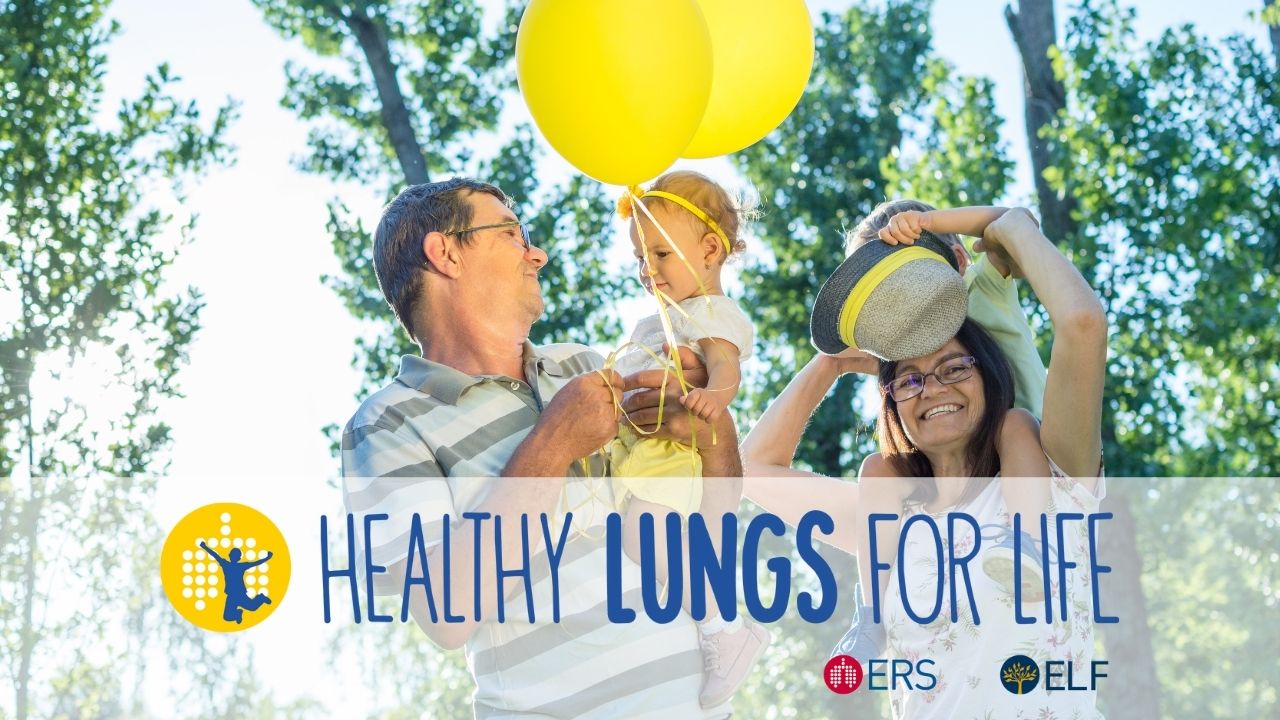Managing bronchiectasis in adults 2025
Content Table
Introduction
Who is this document for and what is it about?
This document explains the recommendations in the European Respiratory Society (ERS) clinical guideline for the management of adults with bronchiectasis. It is for adults living with bronchiectasis or their family or carers.
What are clinical guidelines?
Clinical guidelines are produced after a scientific process used to gather the latest evidence on a condition or symptom, in this case bronchiectasis. Guidelines take into account both the opinions of experts and the priorities of patients and carers who have experience of a condition. Clinical guidelines are written for healthcare professionals. They use them as a best practice document on how to diagnose, manage and treat a condition focusing on the most important aspects of a condition.
What does this document include?
This document summarises the key points from the clinical guideline on managing adults with bronchiectasis. It explains them in a way that is easier to understand for people who do not work in a medical field. It will explain what bronchiectasis management is and what treatment is recommended for people with the condition. The recommendations are divided into:
✅ Strong recommendation in favour of:
The benefits clearly outweigh the harms, and healthcare professionals should offer this option routinely.
🤔 Conditional recommendation in favour of:
The option may be a good choice for some people, but it right depends on individual situations. Healthcare professionals should discuss this option and see if it is right for you.
❌ Strong recommendation against:
The harms clearly outweigh the benefits, and nearly everyone should avoid this option. Healthcare professionals should not routinely offer this options.
⚠️ Conditional recommendation against:
The option may cause more harm than benefit for many, but some people might still prefer it. Healthcare professionals may discuss this options with you to see if it is right for you.
❓No recommendation
The authors of the guideline were unable to make a recommendation.
By providing this information in an accessible way, this document aims to help people understand more about the standard of care they should receive. This can help them to feel informed when making decisions about their treatment options.
Watch the webinar
A 90-minute webinar exploring the guidelines was held in November 2025. This interactive session brought together healthcare professionals and patient representatives to explain the new guidelines in clear, accessible language and share practical insights for daily care and management.
Participants were invited to learn what is new in bronchiectasis care, how the guidelines were developed and how people with bronchiectasis and their caregivers can use them to support communication with their healthcare teams.
About bronchiectasis
Bronchiectasis is a long-term lung condition where a person’s airways are damaged and wider than normal. This is linked with inflammation (swelling) of the lungs and a build-up of mucus (sputum) in the lungs that can make a person more at risk of getting infections.
The most common symptoms include cough, coughing up mucus and being short of breath. People with bronchiectasis can also experience chest pain, feeling very tired out (fatigue) and occasionally coughing up blood.
Treatment for people with bronchiectasis has several aims:
- Treating symptoms
- Preventing chest infections (exacerbations), during which symptoms get worse for a prolonged period of time
- Improving quality of life
- Stopping the condition from getting worse.
Bronchiectasis can have many different causes. This guideline gives general advice, but it does not cover everything. Recommendations should be adjusted to each person’s situation and the specific cause of their condition.
The recommendations
Identifying the cause and checking severity
✅ Strong recommendation in favour of: everyone diagnosed with bronchiectasis should be tested to identify the underlying cause and to assess how severe the disease is. This helps tailor treatment, predict future complications, and find other health problems (such as asthma, immune conditions, or infections) that might need treatment.
Tests may include:
- Blood tests to check general health and to see how the immune system is working
- Mucus samples to check for infections
- A CT scan of the chest
- Testing for rare genetic conditions such as cystic fibrosis (CF) or primary ciliary dyskinesia (PCD) in specific cases.
Healthcare teams should also check for other conditions that are common in people with bronchiectasis, such as heart disease, osteoporosis, depression, sinus problems, and acid reflux.
Airway clearance techniques (ACTs)
✅ Strong recommendation in favour of: people with bronchiectasis should be taught techniques to help clear mucus from their lungs. These are known as airway clearance techniques and can include breathing exercises or the use of handheld devices. ACTs improve quality of life by reducing symptoms and may reduce flare-ups (exacerbations), even in people who do not produce a lot of mucus.
These techniques should be personalised, and ideally taught by a physiotherapist experienced in bronchiectasis care.
Mucoactive medications
🤔 Conditional recommendation in favour of: mucoactive treatments are medicines that help thin mucus so it is easier to clear from the lungs. These may be helpful when symptoms are not well controlled with airway clearance techniques alone. They should be considered on an individual basis, especially for people with ongoing mucus problems.
⚠️ Conditional recommendation against: the medicine called recombinant human DNase should not be used, as there is no evidence to show that it helps.
Inhaled antibiotics
✅ Strong recommendation in favour of: people with Pseudomonas aeruginosa infection who are at high risk of chest infections, should take long-term inhaled antibiotics.
Being at high risk of chest infections usually means someone has frequent flare-ups (for example, two or more in a year), severe infections that need hospital treatment, or severe daily symptoms such as coughing up large volumes of phlegm. These people are more likely to experience worsening symptoms, future exacerbations, lung damage, and hospitalisations.
🤔 Conditional recommendation in favour of: people with other chronic infections who are at high risk of chest infections could try long-term inhaled antibiotics.
Inhaled antibiotics can reduce the number and severity of infections in people who are at high risk of flare-ups, especially those with long-term infection from the bacterium Pseudomonas aeruginosa. They may also help other people with other repeated infections, but the evidence is less strong.
These treatments are delivered using a nebuliser and are typically taken for several months. They should be reviewed regularly and stopped if they are not helping.
Long-term macrolide antibiotics
Macrolides (such as azithromycin) are a type of antibiotic that also help reduce swelling (inflammation) in the body. Long-term treatment with macrolides reduces infections and improves quality of life in people with frequent flare-ups.
✅ Strong recommendation in favour of: Long term macrolides should be used in people at high risk of chest infections
Many patients should not take macrolides including patients who may have non-tuberculous mycobacterial infections.
Healthcare professionals will consider the possibility of heart, hearing, or liver problems before starting macrolides and monitor for side effects.
Long-term non-macrolide oral antibiotics
⚠️ Conditional recommendation against: oral antibiotics that are not macrolides (such as penicillin or amoxicillin) are not recommended as a regular treatment for most people with bronchiectasis. This is because the evidence showing they are effective is limited and the risk of side effects and antibiotic resistance may outweigh the benefits.
They may be considered in special cases, such as when macrolides cannot be used. This refers to taking the medication every day as a preventative measure and does not mean patients should avoid these antibiotics if they are needed for a chest infection.
Treating new infections (eradication therapy)
🤔 Conditional recommendation in favour of: if Pseudomonas aeruginosa is found for the first time in a mucus sample, treatment could be offered to try to remove it before it becomes a long-term problem. There is limited research on this, but it may help reduce the risk of future flare-ups and complications.
The most effective treatment is a course of oral or intravenous antibiotics targeting Pseudomonas bacteria, followed by an antibiotic through a nebulizer.
Inhaled corticosteroids (ICS)
⚠️ Conditional recommendation against: ICS are not recommended for people with bronchiectasis unless they also have asthma or chronic obstructive pulmonary disease (COPD). These medicines may increase the risk of infection and have not been shown to help in bronchiectasis alone.
Further research is needed to see if ICS might help a small group of patients with high levels of a type of white blood cell called eosinophils.
Pulmonary rehabilitation and physical activity
✅ Strong recommendation in favour of: a pulmonary rehabilitation programme should be offered to people who experience breathlessness or reduced physical activity . These programmes combine physical training, education, and support to help people feel stronger, breathe better, and manage their condition.
Regular physical activity is also encouraged for all people with bronchiectasis, as it has multiple health benefits.
Diagnosing and treating flare-ups (exacerbations)
A flare-up, also called an exacerbation, is when symptoms get worse. The ERS 2025 guideline panel reviewed a number of other documents and guidelines which discuss the management of exacerbations and made the following statements based on the available information.
Diagnosing an exacerbation
A flare-up should be diagnosed when key symptoms get worse, including:
- More or thicker mucus or a change in colour of mucus
- A change in cough/more coughing
- More breathlessness
- Tiredness, weakness or fever
- Coughing up blood (even a little)
- Struggling to exercise or chest pain.
A severe flare-up may mean hospital care or IV antibiotics are needed.
To help diagnose an exacerbation, healthcare professionals should:
- Take a mucus sample early – ideally before starting antibiotics. This helps figure out which bacteria are causing problems.
- If there are no improvements with antibiotics, the mucus test should be repeated to help guide the next steps.
Treating an exacerbation
- Start antibiotics
Antibiotics are chosen based on past mucus test results, local bacterial resistance, and how bad symptoms are. Two weeks (14 days) is the standard length of time for taking antibiotics, especially if the flare-up is severe or caused by Pseudomonas aeruginosa. Shorter courses may be okay for mild symptoms or when the infection is caused by bacteria that respond well to antibiotics (like Streptococcus pneumoniae). - Follow self-management plans
Self-management plans can help advise people on how to recognise a flare-up of symptoms. With proper training, they can start antibiotics themselves at home when early signs of a flare-up appear. - Escalate care if needed
If symptoms do not get better quickly, or if the flare-up is severe, healthcare professionals should reassess to see if IV antibiotics or a hospital are needed. - Adjust airway clearance techniques
Healthcare professionals should suggest doing more airway clearance techniques or trying different techniques during a flare-up to see if this helps.
Diagnosing and treating patients whose condition is rapidly getting worse
Sometimes patients experience a change in their condition, and they may start having very frequent chest infections, symptoms may suddenly or badly worsen, or lung function may decline quickly. The authors reviewed guidelines and other documents to develop an algorithm for what clinicians should do if a patient reports that they are quickly getting worse:
Investigations
- Full reassessment
If symptoms suddenly worsen or become more frequent or severe, healthcare professionals should complete a reassessment of the condition and treatment plan. - Check if treatments are being followed
Healthcare professionals should check that airway clearance exercises are working effectively, and any prescribed medications are being taken correctly. - Looking for other health problems
There should also be further checks to see if other health conditions (not just bronchiectasis) might be making things worse, like asthma, COPD, or immune system issues. Some infections or complications are known to cause deterioration, such as:- ABPA (a fungal-related lung condition),
- NTM (a rare bacterial infection), or
- a new lung infection.
- Repeating chest scans
A new CT scan may help spot changes in the lungs that explain the worsening symptoms. - Re-check for NTM if needed
If symptoms do not improve after starting antibiotics, and if there are signs of infection with non-tuberculous mycobacteria (NTM), further testing is needed to look for this.
Treatments
- Refer to a specialist
If the patient is not already seeing a bronchiectasis expert, they should be referred to one as soon as possible. - Review and adjust the treatment plan
Healthcare professionals should personalise treatment using a “treatable traits” approach. This may include:- Improving mucus clearance techniques
- Adding or adjusting mucus-thinning medications
- Checking and updating vaccinations
- Considering long-term antibiotics (oral or inhaled)
- Trying to get rid of Pseudomonas if it is found in mucus
- Using inhalers (bronchodilators) or inhaled steroids when needed
- Starting pulmonary rehabilitation
- Using oxygen or breathing support if needed.
- Consider lung surgery
In a small number of people, bronchiectasis is limited to one part of the lung. For these people, if symptoms do not improve with medicines, surgery might help. - Refer for lung transplant evaluation early
If bronchiectasis keeps getting worse despite treatment—especially if lung function gets much worse, patients should be referred for a transplant evaluation without delay.
The Bronchiectasis Patient Checklist is based on the European Bronchiectasis Guidelines 2025, developed by a team of expert doctors, physiotherapists, other healthcare professionals and patients.
The checklist reflects what most patients with bronchiectasis should expect from their care according to these guidelines.
Please note that not all of these recommendations will apply to all patients. Ask your healthcare professional to go through the list and explain which apply to you.
Download the checklistPatients’ perspective
People with lived experience of bronchiectasis helped healthcare professionals put this guideline together. In this video, they share their perspective on living with bronchiectasis. They discuss their experiences of treatments and their input into this:
Further reading
This guideline was produced by the European Respiratory Society and the European Lung Foundation. You can find out more about these organisations and access the full professional guideline using the links below:
Full clinical guideline – published in the European Respiratory Journal in October 2025: https://doi.org/10.1183/13993003.01126-2025
Further resources for patients and carers:
Read more about bronchiectasis
Join the European Lung Foundation’s Bronchiectasis Patient Advisory Group
Download the ‘Bronchiectasis Patient Checklist’
About ERS
The European Respiratory Society (ERS) is an international organisation that brings together physicians, healthcare professionals, scientists and other experts working in respiratory medicine. It is one of the leading medical organisations in the respiratory field, with a growing membership representing over 140 countries. The ERS mission is to promote lung health in order to alleviate suffering from disease and drive standards for respiratory medicine globally. Science, education and advocacy are at the core of everything it does. ERS is involved in promoting scientific research and providing access to high-quality educational resources. It also plays a key role in advocacy – raising awareness of lung disease amongst the public and politicians. www.ersnet.org
About ELF
The European Lung Foundation (ELF) was founded by ERS to bring together patients and the public with professionals. ELF produces public versions of ERS guideline to summarise the recommendations made to healthcare professionals in Europe, in a simple format for all to understand. These documents do not contain detailed information on each condition and should be used in conjunction with other patient information and discussions with your doctor. More information on lung conditions can be found on the ELF website: www.europeanlung.org





